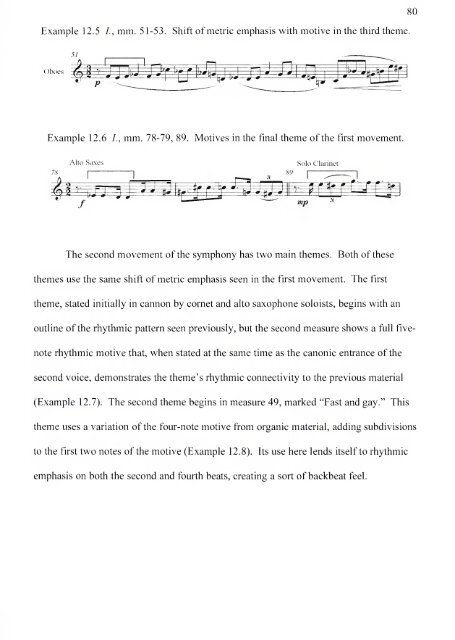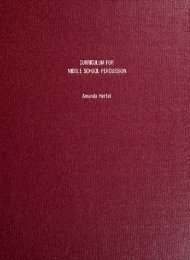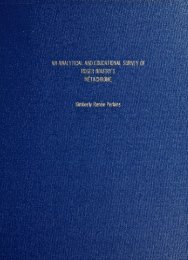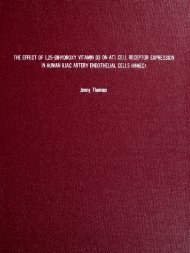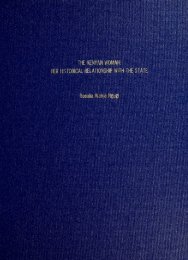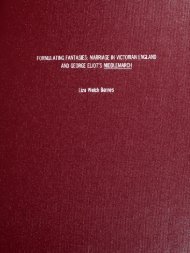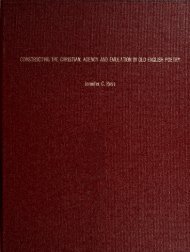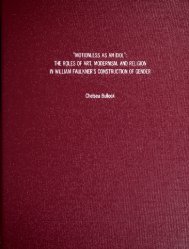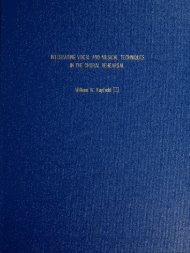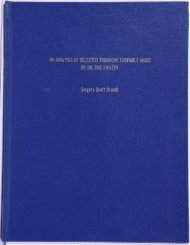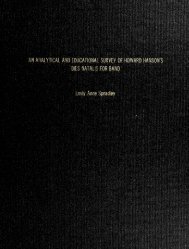The Study and Application of Rhythmic Analysis for Wind Band ...
The Study and Application of Rhythmic Analysis for Wind Band ...
The Study and Application of Rhythmic Analysis for Wind Band ...
Create successful ePaper yourself
Turn your PDF publications into a flip-book with our unique Google optimized e-Paper software.
Example 12.5 /., mm. 51-53. Shift <strong>of</strong> metric emphasis with motive in the third theme.51Example 12.6 /., mm. 78-79, 89. Motives in the final theme <strong>of</strong> the first movement.<strong>The</strong> second movement <strong>of</strong> the symphony has two main themes.Both <strong>of</strong> thesethemes use the same shift <strong>of</strong> metric emphasis seen in the first movement. <strong>The</strong> firsttheme, stated initially in cannon by cornet <strong>and</strong> alto saxophone soloists, begins with anoutline <strong>of</strong> the rhythmic pattern seen previously, but the second measure shows a full fivenoterhythmic motive that, when stated at the same time as the canonic entrance <strong>of</strong> thesecond voice, demonstrates the theme's rhythmic connectivity to the previous material(Example 12.7). <strong>The</strong> second theme begins in measure 49, marked "Fast <strong>and</strong> gay." Thistheme uses a variation <strong>of</strong> the four-note motive from organic material, adding subdivisionsto the first two notes <strong>of</strong> the motive (Example 12.8).Its use here lends itself to rhythmicemphasis on both the second <strong>and</strong> fourth beats, creating a sort <strong>of</strong> backbeat feel.


